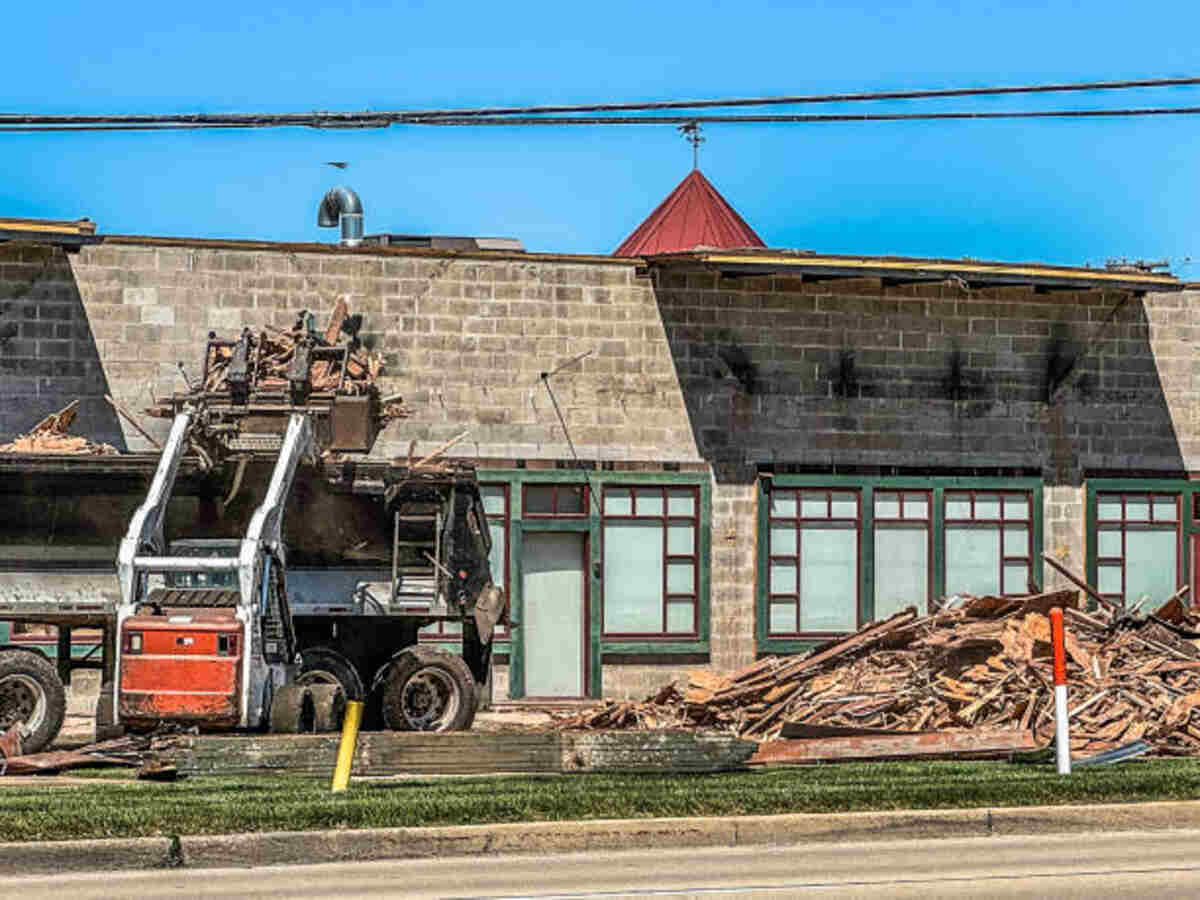1. Introduction to Sustainable Practices in Irvine Demolition Projects
Sustainable Practices in Irvine Demolition Projects play a massive role in shaping the city’s green reputation. Irvine is known for its forward-thinking stance on environmental issues, and that perspective extends to demolitions. By focusing on Sustainable Practices in Irvine Demolition Projects, contractors, city officials, and community members come together to protect the local environment while enabling necessary growth. Often the Amazing fact about Irvine Demolition Services.
When we talk about sustainability, we’re referring to methods that reduce waste, conserve resources, and minimize negative environmental impacts. In the realm of demolition, it’s easy to picture a wrecking ball and heaps of rubble. However, Irvine has been actively promoting alternative solutions that cut down on landfill waste, prevent hazardous exposure, and even save money over time.
Because Irvine places such importance on community well-being, sustainable demolition is a natural priority. Policies here reflect a broader commitment to green living—after all, nobody wants to see dangerous debris blowing into neighborhoods or toxic chemicals leaching into groundwater. Irvine’s local government works closely with demolition and construction teams to ensure Sustainable Practices in Irvine Demolition Projects. These best practices are crucial to maintaining the city’s high standards of living.
Sustainability in demolition matters for several reasons:
- Environmental Health: Cutting down on pollution and responsibly handling waste keeps ecosystems thriving.
- Cost Savings: Often, recycling and reusing materials lowers expenses in the long run.
- Community Perception: Eco-friendly demolition methods boost public trust and satisfaction.
Irvine’s emphasis on sustainable methods stems from its early city planning efforts. Master-planned communities have been designed to accommodate open spaces and greenbelts. It’s no surprise that demolition practices align with the city’s overall ethos of eco-conscious growth. So, if you’re looking to tear down a structure in Irvine—whether it’s a dilapidated home or a large commercial building—Sustainable Practices in Irvine Demolition Projects are what you should be aiming for from the get-go.
2. The Environmental Context in Irvine
Irvine is blessed with a temperate climate, diverse habitats, and carefully zoned residential, commercial, and natural spaces. Yet this city faces ecological challenges like any growing urban area. Population density drives up development, and older buildings inevitably need replacing or retrofitting. That’s where Sustainable Practices in Irvine Demolition Projects come into play.
Environmental Priorities
- Wildlife Preservation: Protected habitats near demolition sites mean extra precautions to prevent disturbance.
- Air Quality: Orange County air pollution concerns demand low-emission machinery and dust control measures during demolition.
- Soil Protection: Soil contamination is a real issue if demolition debris or chemicals aren’t handled correctly.
Balancing Development and Ecology
Irvine’s zoning regulations try to maintain a balance between expansion and green space. Demolition projects can inadvertently harm nature if not carried out responsibly. Hence, the city mandates thorough planning processes, encouraging contractors to integrate Sustainable Practices in Irvine Demolition Projects whenever possible. Meeting these regulations isn’t just about legal compliance; it’s about preserving the beauty and livability of Irvine for future generations.
3. The Importance of Eco-Friendly Demolition
Conventional demolition techniques usually involve brute force, zero waste separation, and a quick rush to the landfill. Such approaches often lead to:
- High Levels of Pollution: Emissions from heavy equipment and dust in the air.
- Wasted Resources: Perfectly reusable materials end up in landfills.
- Community Friction: Residents upset by noise, debris, or safety hazards.
In contrast, Sustainable Practices in Irvine Demolition Projects favor methods that consider both environmental and social factors. Irvine’s city officials and environmental groups have been emphasizing how an eco-friendly approach contributes to a healthier community, fosters economic growth, and preserves the local ecosystem.
Economic and Environmental Benefits
- Reduced Landfill Costs: Recycling and reusing materials can cut disposal fees significantly.
- Healthier Communities: Lower dust and pollution levels keep residents safe.
- Corporate Reputation: Builders and demolition firms known for sustainability can attract more clients and community support.
By looking at the big picture, Irvine positions itself at the forefront of environmental stewardship. Eco-friendly demolition practices demonstrate how a city can continue to evolve without sacrificing its ecological values. For those planning demolition, keep in mind that Sustainable Practices in Irvine Demolition Projects aren’t just a passing trend—they’re an integral part of responsible building and teardown methods in this area.
4. Minimizing Waste Generation
One of the first steps toward sustainability is reducing the overall volume of waste produced during demolition. Many people mistakenly believe that everything from a demolished structure ends up as useless rubble. In reality, a lot can be done upfront to keep trash piles from ballooning.
Planning and Assessment
Before a single brick is removed, teams should perform a site assessment. This identifies reusable or recyclable components such as wooden beams, steel frames, or windows. By having a list of salvageable materials, you can plan for a more systematic teardown.
- Pre-Demolition Sorting: Designate bins or sections on-site for different material types.
- Material Inventory: Keep track of items that can be reused, sold, or donated.
Advanced Tools for Estimations
Software solutions, ranging from Building Information Modeling (BIM) to specialized project management apps, can help estimate the volume of specific materials. These tools let contractors prepare for salvage operations, ensure the right equipment is on-site, and plan disposal routes that adhere to Sustainable Practices in Irvine Demolition Projects.
The Bottom Line
By making a conscious effort to reduce waste at every step of the process, demolition crews don’t just help the environment—they also save money and time. Conserving resources starts with the mindset that not everything is trash. A little creativity and planning go a long way in cutting back landfill contributions.
5. Resource Recovery and Material Reuse
Resource recovery is central to Sustainable Practices in Irvine Demolition Projects. Instead of viewing a building as a pile of future debris, sustainable demolition sees it as a treasure trove of materials waiting for a second life.
Key Materials for Recovery
- Concrete and Masonry: Often crushed on-site for road base or landscaping filler.
- Metal: Steel and aluminum are highly recyclable, fetching good market prices.
- Wood: Beams and planks can be reprocessed or even reused in renovations.
Reclaimed materials can either be repurposed for new construction projects or sold to salvage yards. Some demolition teams maintain partnerships with local charities or community organizations that can rehome these materials at low cost. If you’re working in Irvine, the city often provides lists of local recyclers and donation centers that make the entire resource recovery process smoother.
Boosting Efficiency
- On-Site Separation: Having different containers clearly labeled for each type of material accelerates recycling.
- Collaborative Networks: Engaging with local deconstruction experts can reduce the time spent sorting.
Not only does this strategy cut down on waste, but it also reduces the raw materials needed for future builds. In turn, that curbs greenhouse gas emissions from manufacturing new materials. It’s a win-win approach that embodies Sustainable Practices in Irvine Demolition Projects.
6. Hazardous Material Management
Old structures often harbor hazards like asbestos, lead-based paint, mold, or even chemical residues. Protecting workers and the public from these dangers is vital—both from a legal standpoint and a moral one.
Identifying Hazardous Substances
An initial inspection might reveal old insulation (potentially containing asbestos) or peeling paint with high lead content. Local Irvine regulations mandate thorough testing and a specialized removal plan if hazardous materials are discovered.
Safe Removal Methods
- Containment: Sealing off areas before removing toxins.
- Proper Ventilation: Using negative air pressure machines to keep contaminants from spreading.
- Trained Personnel: Only certified professionals should handle hazardous materials to avoid health risks.
These steps ensure that Sustainable Practices in Irvine Demolition Projects never compromise worker safety or the surrounding community. By following strict protocols, Irvine maintains its reputation as a city that cares about both the environment and public health.
7. Responsible Disposal and Recycling
Even after recovering valuable materials, there will still be waste to remove from a demolition site. Responsible disposal means working with licensed facilities that comply with environmental regulations. The overarching goal remains consistent: keep as much material out of the landfill as possible.
Setting Up On-Site Recycling Stations
Having designated collection points for different materials—like metals, plastics, or glass—significantly boosts recycling rates. Employees can quickly deposit items into the correct bins, streamlining the process.
Collaborations and Monitoring
Contractors often partner with waste management companies that specialize in sustainable practices. These companies can provide:
- Data Reporting: Detailed reports on how much waste was recycled, landfilled, or converted to energy.
- Best Practice Guidance: Advice on how to optimize sorting and reduce contamination in recycling streams.
Such collaboration ensures Sustainable Practices in Irvine Demolition Projects remain transparent and measurable. By monitoring disposal outcomes, stakeholders can continuously refine their methods and hit higher sustainability benchmarks.
8. Deconstruction vs. Traditional Demolition
Deconstruction is a more labor-intensive but eco-friendly alternative to standard demolition. Rather than smashing a structure into pieces, deconstruction involves carefully dismantling components so they remain intact for reuse or recycling.
Differences in Methods and Outcomes
- Material Preservation: Deconstruction saves a higher percentage of usable materials.
- Labor Costs: Usually higher for deconstruction, but it can pay off in salvage value.
- Community Impact: Less noise and dust since the teardown is more methodical.
Many building owners in Irvine see deconstruction as an investment in both sustainability and local craftsmanship. If you preserve materials like antique doors, hardwood floors, or ornamental fixtures, they can fetch a premium on the resale market. This aligns perfectly with the vision behind Sustainable Practices in Irvine Demolition Projects—giving new life to old structures while minimizing the environmental toll.
9. Technology Innovations for Eco-Friendly Demolition
The construction and demolition industry is rapidly evolving. New gadgets and digital platforms make it simpler than ever to plan sustainable demolition, track materials, and reduce environmental harm. From advanced software to cutting-edge machinery, these innovations are key to boosting Sustainable Practices in Irvine Demolition Projects.
Software and Data Analytics
- Material Tracking: Systems that record the journey of each piece of debris from site to recycler.
- 3D Modeling: Tools like BIM help contractors identify demolition sequences that maximize salvage opportunities.
Robotic and Drone Assistance
Drones can scout rooftops and confined spaces, capturing real-time video without putting workers at risk. Some robotics solutions even handle tasks like concrete drilling or hazardous material collection. These improvements help reduce accidents, cut project times, and improve overall sustainability by targeting areas with high salvage potential first.
10. Integrating Green Building Practices
Demolition isn’t an isolated act—it’s often the precursor to new construction projects. Linking the teardown to future green building standards ensures the cycle of sustainability continues.
Designing for Deconstruction
Architects and engineers can plan new structures with an eye toward eventual demolition or renovation. This concept, called “design for deconstruction,” allows materials to be easily dismantled and reused at the end of a building’s life cycle. It’s a future-focused method that dovetails with Sustainable Practices in Irvine Demolition Projects.
LEED Certifications
The U.S. Green Building Council’s LEED (Leadership in Energy and Environmental Design) certification has specific points for waste management. If the demolition phase successfully diverts a substantial portion of waste from landfills, the subsequent construction project can score higher LEED credits. This synergy motivates developers to adopt greener demolition methods, benefiting everyone involved.
11. Navigating Regulations and Permits
Before demolishing any structure in Irvine, you’ve got to wade through city permits and comply with local and state rules. Authorities are vigilant about controlling noise, dust, and pollutant emissions. Thankfully, they’ve also set up a framework that promotes Sustainable Practices in Irvine Demolition Projects:
- Demolition Permits: Must include details on waste management and hazard control.
- Environmental Impact Assessments: Larger projects often need an assessment to predict ecological effects.
- Coordination with Utility Providers: Ensure electric, gas, and water lines are safely disconnected or rerouted.
By adhering to these regulations, contractors avoid fines and keep Irvine’s environment safe. Moreover, many local officials are open to discussing sustainable alternatives, offering guidance that can enhance a project’s eco-friendly quotient.
12. Community Involvement and Stakeholder Engagement
Sustainability isn’t just about land and materials—it’s also about people. Irvine fosters a sense of shared responsibility for environmental outcomes. That means open communication with neighbors, local businesses, and interest groups.
Public Hearings and Feedback
For larger projects, hosting a public hearing or community meeting can address concerns early on. Stakeholders may raise points about noise, traffic, or air quality impacts. Listening to these issues and explaining your plan for Sustainable Practices in Irvine Demolition Projects can build trust and reduce complaints down the line.
Shared Goals
Many Irvine residents want to see the city maintain its reputation for cleanliness and green thinking. They tend to support demolition projects that openly demonstrate eco-friendly methods. When you incorporate community feedback and keep lines of communication open, you turn what could be a stressful process into a collaborative effort.
13. Cost-Effectiveness and Long-Term Savings
At first glance, sustainable demolition techniques might appear more expensive, mainly due to added labor for deconstruction or advanced material sorting. However, careful analysis often reveals cost benefits:
- Reduced Disposal Fees: Landfill costs can be hefty, and recycling items can drastically cut these expenses.
- Resale Value of Salvageable Materials: Quality materials and fixtures can bring in additional revenue.
- Tax Incentives: Government rebates sometimes apply for sustainable waste management practices.
Over the long haul, Sustainable Practices in Irvine Demolition Projects can be a boon for both the environment and the bottom line. Plus, an eco-conscious reputation can help companies land more projects, boosting overall profitability. When factoring in all these advantages, it’s clear that sustainability isn’t just the right thing to do—it’s a smart business move.
14. Frequently Asked Questions (FAQs)
What does sustainable demolition really mean in Irvine?
Sustainable demolition in Irvine focuses on minimizing waste, recovering reusable materials, and protecting the local environment. It aligns with the city’s eco-friendly ethos and strict regulations.
Do sustainable practices significantly increase demolition costs?
While some upfront expenses may rise (e.g., more labor for deconstruction), savings on landfill fees and the potential resale of materials often balance out—or even reduce—overall costs.
Which materials are commonly recycled or reused?
Metals like steel and aluminum, concrete, wood, and fixtures such as windows or doors can be recycled or repurposed. These materials are integral to Sustainable Practices in Irvine Demolition Projects.
Is a special permit needed for eco-friendly demolition methods?
Irvine’s standard demolition permit typically covers sustainable techniques, but you may need extra documentation if hazardous materials are found or if large-scale deconstruction is planned.
How do I handle hazardous substances in an old building?
It’s crucial to hire certified professionals to inspect, contain, and remove items like asbestos or lead paint. Proper procedures ensure community safety and compliance with Irvine’s regulations.
Are there local incentives for sustainable demolition?
Occasionally, government agencies provide grants or tax breaks for projects that meet high green standards. Check with Irvine’s planning department or the California EPA for current offerings.
15. Conclusion and Next Steps
Sustainable Practices in Irvine Demolition Projects are more than a buzzword—they’re a long-term commitment to preserving the city’s natural beauty while enabling necessary urban renewal. By systematically reducing waste, reclaiming materials, and preventing hazards, these methods safeguard both the environment and the well-being of Irvine’s residents.
If you’re about to embark on a demolition project, remember that planning is everything. Start by identifying reusable materials, coordinate with city officials, and keep the community informed about your progress. Rely on technology to track and optimize your demolition processes, and don’t hesitate to invest in the training or equipment needed to ensure a safe, eco-conscious teardown.
In the big picture, sustainable demolition practices benefit everyone involved—property owners, contractors, neighbors, and, most importantly, the environment. Irvine’s holistic approach to sustainability exemplifies how growth and ecological responsibility can go hand in hand, setting a standard for other cities nationwide. By embracing Sustainable Practices in Irvine Demolition Projects, you become part of a collective effort to preserve the planet, protect public health, and pave the way for greener, happier communities.


